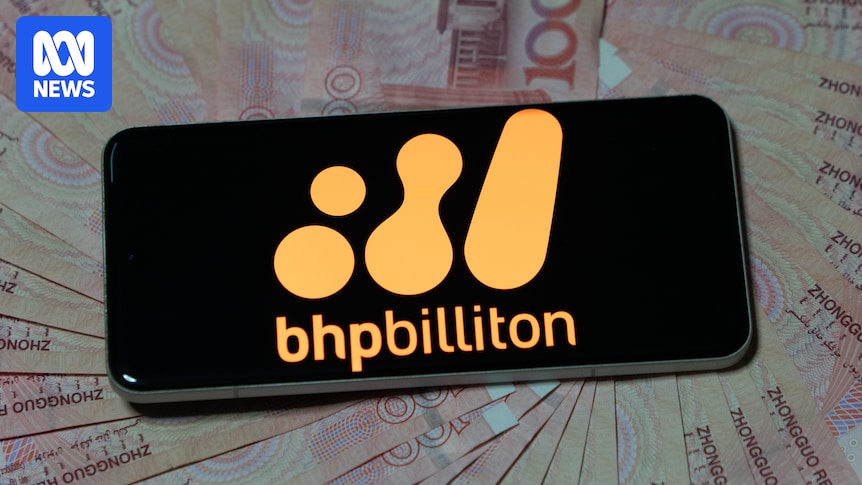
On the surface, the ongoing negotiations between Australian mining giant BHP and China’s state-backed iron ore buyer, China Mineral Resources Group (CMRG), might appear as a typical commercial dispute. However, the implications of this standoff could extend far beyond immediate financial outcomes, potentially influencing international trade flows and reshaping the relationship between China and the West.
The issue gained public attention late last month when Australian Prime Minister Anthony Albanese expressed his concern over reports suggesting that China might block BHP iron ore shipments amid a pricing disagreement. Despite the high stakes, both parties have remained notably silent, leaving the current state of affairs shrouded in uncertainty.
Geraldine Slattery, BHP’s Australia president, attempted to maintain a calm front earlier this week, acknowledging the “often conflicting speculation” surrounding the negotiations while emphasizing the company’s “strong relationships” with Chinese customers. Yet, industry analysts suggest that this situation is far from business as usual.
Background of the Dispute
Australia has long been a major supplier of iron ore to China, a trade that has been mutually beneficial. China’s construction boom has been fueled by high-quality Australian iron ore, while Australia has reaped significant economic benefits. Despite this, China has sought greater control over the pricing of iron ore, especially as its steel producers face narrowing margins.
In 2022, China established the CMRG to centralize its purchasing power, a move analysts believe is aimed at reshaping the trade terms to its advantage. The current negotiations with BHP are seen as a critical test case for this strategy.
The initial report of a potential Chinese “ban” on BHP iron ore shipments caused market jitters and drew attention from the Australian government. However, there is no concrete evidence of any trade disruptions at this stage. Cargo ships continue to transport BHP’s iron ore to Chinese ports, and recent reports indicate business as usual.
The Strategic Game at Play
While no formal ban has been imposed, analysts believe CMRG has likely raised the possibility of a ban as a negotiation tactic. Western Australia Premier Roger Cook hinted at China’s “strategic gamesmanship” when the story first emerged. The real test may come later this month when BHP begins selling iron ore for January delivery.
At the heart of this dispute is the price of iron ore. As China’s demand moderates and new mines come online, CMRG may feel empowered to dictate terms and drive prices down. Reports suggest a significant gap between BHP’s desired price of $US110 per tonne and CMRG’s target of $US80 per tonne.
Chinese steel executives have described the price gap as “too wide” and BHP’s expectations as “out of step with market reality.”
Beyond pricing, some analysts speculate that CMRG is pressuring BHP to accept payment in China’s currency, the Renminbi (RMB), a move with potentially significant ramifications.
Implications of RMB Transactions
Recent reports from industry sources and Chinese media suggest that BHP may have agreed to settle 30% of spot trades in RMB rather than the US dollar. While unconfirmed, such a shift could benefit Chinese steelmakers by transferring foreign exchange risks to miners and providing more leverage in price negotiations.
Dr. Darren Lim from the Australian National University notes that while RMB transactions are not unprecedented, the current negotiations indicate a shift in power dynamics, with China leveraging its buyer status to reshape trade practices.
“China’s iron ore buyers are done playing price-taker. A deadlocked BHP deal reveals a new strategy: negotiate collectively, pay in yuan, and set the rules,” according to Chinese media outlet Caixin.
Broader Economic and Political Context
The push for RMB transactions is part of a broader strategy by China to assert control over global commodity markets and reduce reliance on the US dollar. Dr. Marina Zhang from the Australia-China Relations Institute describes the dispute as a “shift in power” rather than a trade breakdown.
While some analysts caution against viewing this as an attempt to dethrone the US dollar, they acknowledge China’s efforts to build resilience by conducting more trade in its currency. However, the RMB’s limited convertibility and the dominance of dollar-based markets pose challenges to this strategy.
Potential Consequences and Future Outlook
If no resolution is reached and a ban is imposed, both BHP and China would face repercussions. BHP could see reduced sales and increased market volatility, while China might experience supply disruptions and increased costs.
“Any sharp cut in supply from BHP would raise costs and disrupt steel production in China,” Dr. Zhang notes, highlighting the logistical challenges of replacing Australian ore.
As the global iron ore market evolves, the power balance between buyers and sellers is shifting. The outcome of the BHP-CMRG negotiations could set a precedent for future trade dynamics, influencing not just the resources industry but also broader geopolitical relations.
Meanwhile, the timing of this dispute coincides with Australian Prime Minister Anthony Albanese’s upcoming meeting with US President Donald Trump. The BHP-China standoff may attract scrutiny from US officials concerned about the implications for the US dollar’s status.
As the situation unfolds, industry observers and policymakers alike will be closely monitoring the developments, aware of the potential for significant economic and political ramifications.






